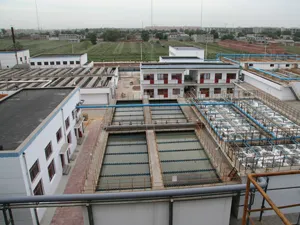Understanding Chemicals Used in Water Treatment Plants
Water treatment plants play a crucial role in supplying safe and clean drinking water to communities. These facilities use a variety of chemicals to ensure water is properly treated and meets safety standards. This article will provide an overview of the primary chemicals used in water treatment processes, their purposes, and their importance in maintaining water quality.
1. Coagulants
One of the first steps in the water treatment process involves removing suspended particles. Coagulants, such as aluminum sulfate (alum) or ferric chloride, are added to the water to help particles clump together into larger aggregates called flocs. This process enhances the efficiency of later filtration stages. By promoting the aggregation of particles, coagulants effectively reduce turbidity and prepare the water for further purification.
2. Disinfectants
Disinfection is essential to eliminate pathogens that can cause waterborne diseases. Chlorine, chloramines, and ozone are commonly used disinfectants in water treatment. Chlorine is perhaps the most well-known disinfectant, offering residual protection against harmful bacteria in the distribution system. However, its use must be carefully managed due to the formation of potentially harmful by-products, such as trihalomethanes (THMs). Ozone, on the other hand, provides powerful disinfection and does not create harmful by-products but lacks residual capacity, necessitating swift distribution and consumption.
3. pH Adjusters
The pH level of water is critical for optimizing the performance of various treatment chemicals. Many treatment processes, including coagulation and disinfection, function best within a specific pH range. Lime (calcium hydroxide) and sulfuric acid are commonly employed to adjust water pH. Lime helps increase pH (making the water more alkaline), while sulfuric acid is used to decrease pH (making water more acidic). Maintaining optimal pH levels ensures maximum effectiveness of coagulants and disinfectants.
water treatment plant chemicals

4. Fluoride
Fluoride is often added to drinking water in many regions to promote dental health. Its use is guided by public health recommendations to prevent tooth decay, especially in children. While fluoride is beneficial in controlled quantities, its levels must be monitored due to concerns regarding overexposure. Water treatment plants must adhere to guidelines set by health organizations to ensure fluoride levels remain within safe limits.
5. Corrosion Inhibitors
Water can be corrosive, especially when it contains dissolved salts and other minerals. Corrosion can damage pipes and may lead to the leaching of metals into the drinking water supply. To mitigate this issue, water treatment plants often utilize corrosion inhibitors like orthophosphate or silica. These chemicals form protective coatings on pipe surfaces, reducing the rate of corrosion and ensuring water quality is maintained throughout the distribution system.
6. Algaecides
In some cases, water sources may experience algal blooms, which can impact water quality and safety. Algaecides, such as copper sulfate, are utilized to control algae growth in reservoirs and treatment facilities. While effective in managing algae, the use of algaecides demands careful consideration to avoid harming aquatic life and ecosystems.
Conclusion
Water treatment plants rely on a diverse array of chemicals to ensure that drinking water is safe, clean, and of high quality. From coagulants that remove suspended particles to disinfectants that eradicate pathogens, each chemical plays a pivotal role in the treatment process. Understanding the purpose and importance of these chemicals helps to appreciate the complexity of modern water treatment practices. While the use of chemicals is essential for safeguarding public health, ongoing monitoring and research are necessary to balance treatment effectiveness with environmental and public health concerns. Ultimately, the continued advancement in chemical treatments and technologies will support the goal of providing safe drinking water for all communities.

